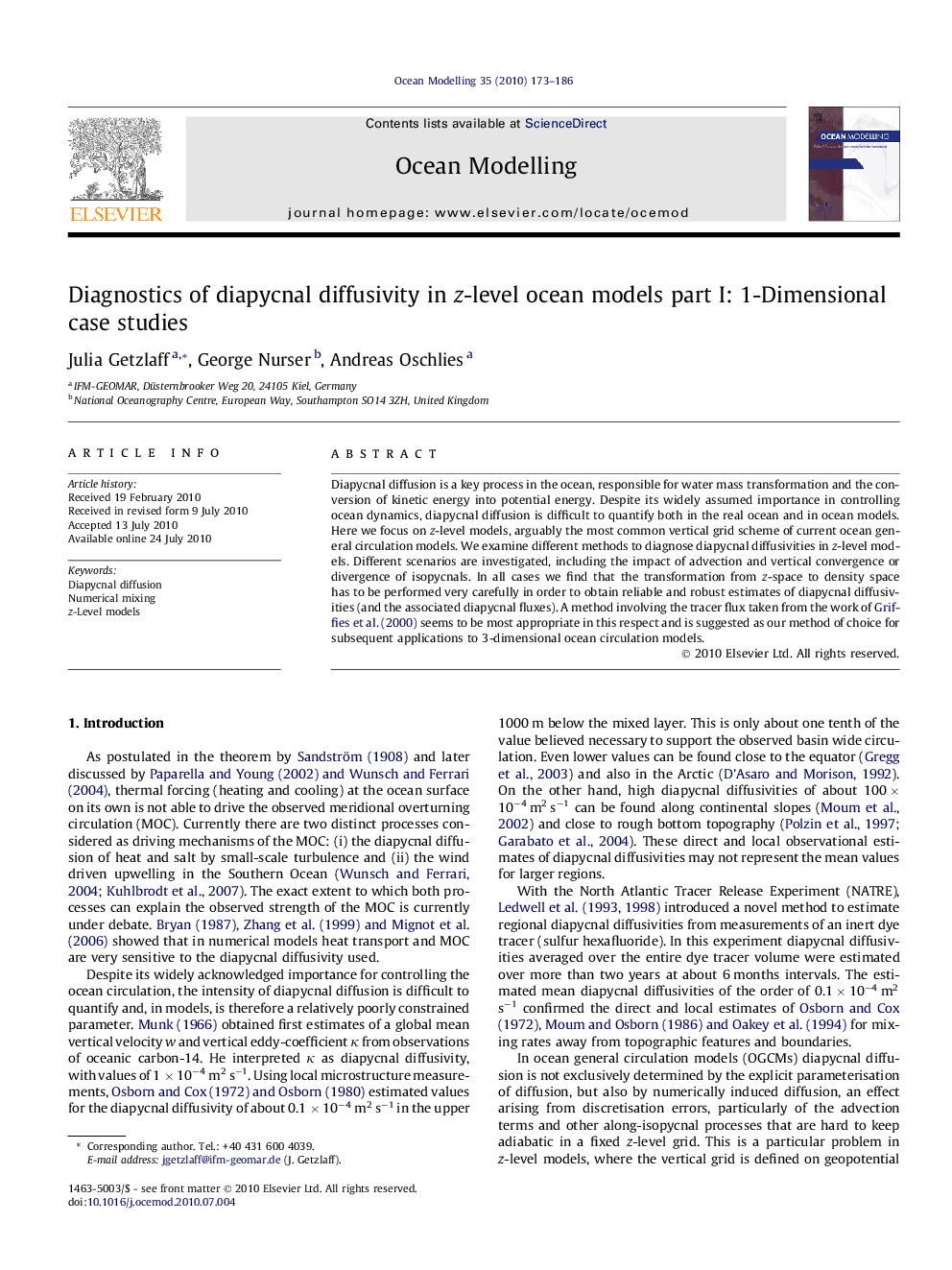| Article ID | Journal | Published Year | Pages | File Type |
|---|---|---|---|---|
| 4552363 | Ocean Modelling | 2010 | 14 Pages |
Diapycnal diffusion is a key process in the ocean, responsible for water mass transformation and the conversion of kinetic energy into potential energy. Despite its widely assumed importance in controlling ocean dynamics, diapycnal diffusion is difficult to quantify both in the real ocean and in ocean models. Here we focus on z-level models, arguably the most common vertical grid scheme of current ocean general circulation models. We examine different methods to diagnose diapycnal diffusivities in z-level models. Different scenarios are investigated, including the impact of advection and vertical convergence or divergence of isopycnals. In all cases we find that the transformation from z-space to density space has to be performed very carefully in order to obtain reliable and robust estimates of diapycnal diffusivities (and the associated diapycnal fluxes). A method involving the tracer flux taken from the work of Griffies et al. (2000) seems to be most appropriate in this respect and is suggested as our method of choice for subsequent applications to 3-dimensional ocean circulation models.
